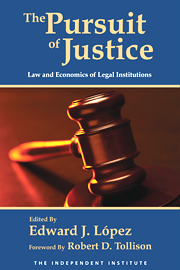Next week, California voters have the opportunity to reform the state’s eminent domain laws, which provide only marginal support for the rights of property owners. Two items on the ballot propose to tighten the reins on eminent domain abuse: Proposition 98 would prohibit economic development takings and would also phase out the government’s power to set price controls on housing, and Proposition 99 would shield owner-occupied, single-family homes from takings for the purpose of transfer to “private persons.”
Property owners currently have too little protection against takings for economic development projects. Proponents argue that it is in the public interest to promote job growth, larger tax bases, and revitalization of stagnant areas. The problem is, these takings transfer properties to other private parties. And that kind of power can make it too tempting for developers and city officials to turn eminent domain into an expedient land grab.
Since June 2005, when the U.S. Supreme Court handed down its infamous Kelo vs. New London ruling, which gave local governments the power to acquire private property for economic development use under the Takings Clause of the Fifth Amendment, 42 states have established eminent domain reform. While these new laws purport to serve property owners, not all of them do, including the bills passed by California in 2006.
In fact, California’s eminent domain reforms are something of a poster child for meaningless change. As the Institute for Justice wrote in their 50 State Report Card on eminent domain reform: “These bills are mostly cosmetic and will not prevent determined officials from taking private property for another private party’s benefit.” These “reforms” earned the state a grade of D- in protecting property. Now it’s up to voters to pass meaningful reform.
Last year’s failed Proposition 90 would have prohibited Kelo-style takings, but it also included a provision to let property owners seek compensation for regulations that diminish property values. Scared by claims of paralyzed city governments and innumerable lawsuits, voters turned down Prop 90 by 52 to 48 percent.
Now voters have two more chances in Prop 98 and Prop 99. Yet a May poll by the Public Policy Institute of California shows that only 30% of likely voters support Prop 98, and that’s down from 37% in March. As for Prop 99, the same poll lists 44% in favor and 36% opposed, with 20% unsure. And so Californians will likely miss out on actual eminent domain reform once again.
Other states are taking more peremptory measures. In a new study, two other economists and I analyzed each of the new pieces of legislation, and found that 23 of them provide strong safeguards against abuse. South Dakota’s new statute runs all of 12 lines long, banning Kelo-style transfers with no exemptions or loopholes. Florida restricted development takings even for blight. And next door in Nevada, not only are private-to-private takings banned, but the government must show proof of public use for any proposed taking.
Always progressive, California has consistently led the way in reform and can continue to do so on June 3. From tax reform in the 1970s to legislative term limits in the 1990s, we have served as an example to other states. Today, 71% of our likely voters support overhauling eminent domain, with 39% expressing a need for major change. Clearly Californians are ready for a resolution to this problem. Isn’t it time for the real eminent domain reform to please stand up?









